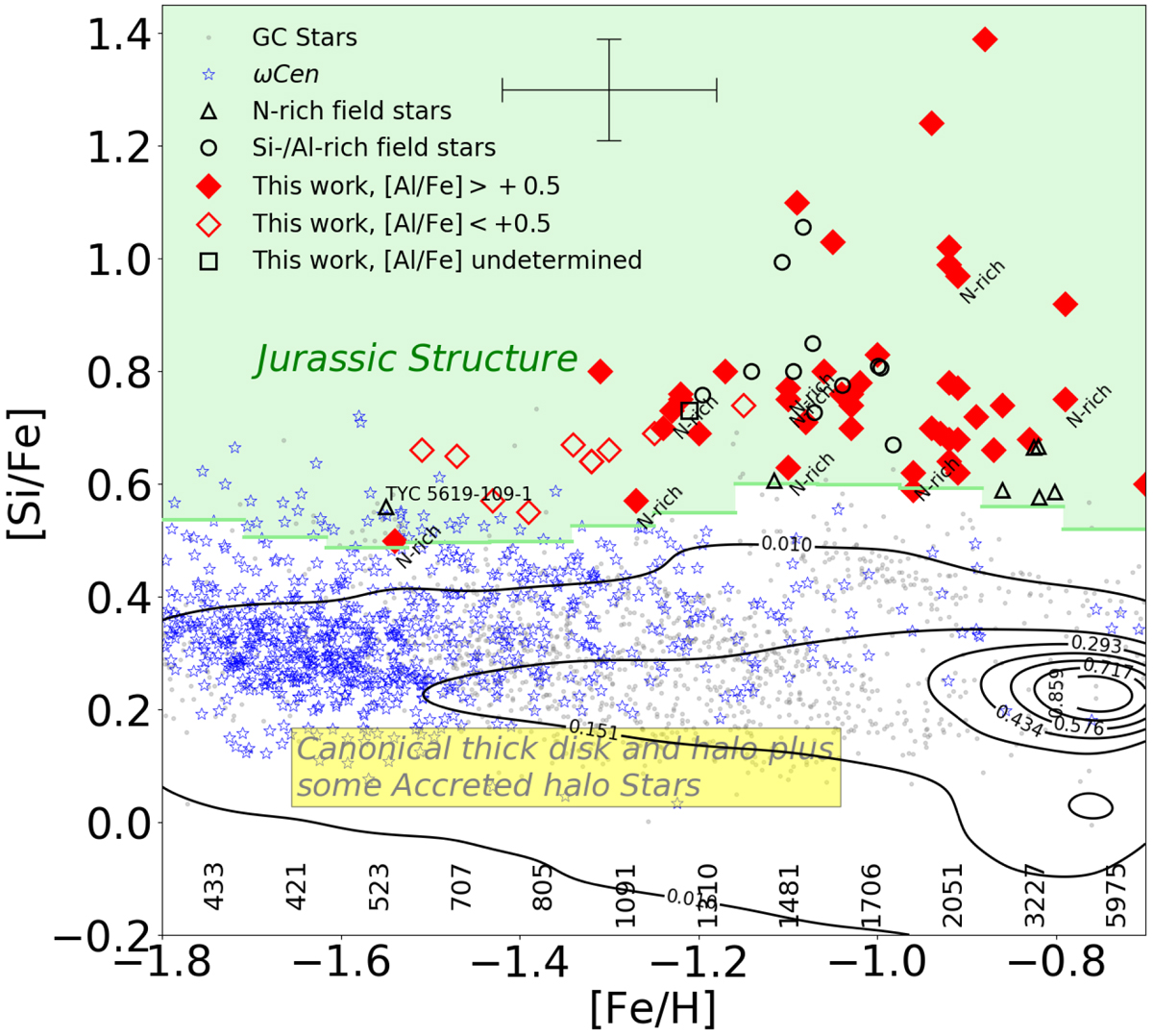Fig. 3.

Kernel Density Estimation (KDE) of the ASPCAP-derived [Si/Fe] abundances for MW stars, as a function of [Fe/H], with contours showing the density of stars that appear to be a metal-poor extension of the thick disk and halo locus. These contours demonstrate that there is a low-density boundary (light green thick lines) separating two higher density regions, one with lower [Si/Fe] (black contours), and one with higher [Si/Fe] (light green shadow region). The BACCHUS-derived [Si/Fe] abundance for the newly identified Si-enhanced stars is highlighted with a black empty square (undetermined [Al/Fe]), red empty diamonds ([Al/Fe] ≲ +0.5 in both the intermediate- and low-aluminum regimes, which are likely to be chemically tagged as escaped former members of MW dwarf spheroidal satellites or GCs), and red filled diamonds (with [Al/Fe] ≳ +0.5 or Al-enhanced stars, which are likely to be chemically tagged as migrants from GCs). Over-plotted are data from Fernández-Trincado et al. (2016b, 2017, 2019b; empty black triangles), from Fernández-Trincado et al. (2019c; empty black circles), and GC stars from Mészáros et al. (2020; gray dots and empty blue star symbols–highlighting the ω Centauri population). The plotted error bars show the median abundance uncertainty from BACCHUS. The number of APOGEE-2+ stars each bin are shown at the center of the bin at the bottom of the plot.
Current usage metrics show cumulative count of Article Views (full-text article views including HTML views, PDF and ePub downloads, according to the available data) and Abstracts Views on Vision4Press platform.
Data correspond to usage on the plateform after 2015. The current usage metrics is available 48-96 hours after online publication and is updated daily on week days.
Initial download of the metrics may take a while.


